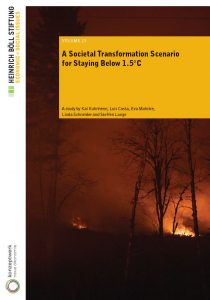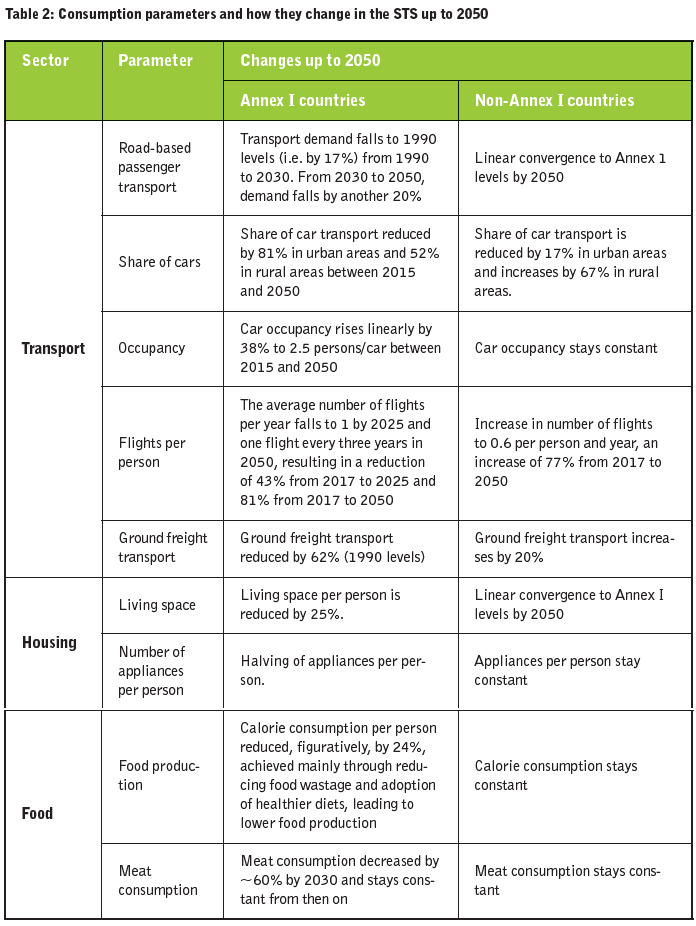A new report from German green left groups heroically try do so, but fails
Originally published at Legal Planet
I emphasize the importance of carbon dioxide removal (CDR) technologies and solar geoengineering research because keeping global warming within the internationally agreed-upon 2°C goal through reducing greenhouse gas emissions alone is extremely difficult, and limiting it to the 1.5°C aspirational target is now essentially impossible. All options to reduce climate change that are consistent with widely held norms should be on the table. Notably, strident opponents of CDR technologies and solar geoengineering (sometimes collectively called “geoengineering”) rarely offer any details as to how dangerous climate change could be otherwise prevented, besides handwaving toward “agro-ecological peasant farming systems.”
Last week, the Heinrich-Böll Foundation, an arm of the German Green Party and one of the leading opponents of geoengineering, along with Konzeptwerk Neue Ökonomie published a report A Societal Transformation Scenario for Staying Below 1.5°C. Accomplishing this without CDR technologies and solar geoengineering requires rejection of what is popular and beneficial, patently unreal assumptions, radical social and economic reorganization, and implicit authoritarianism. Such a strong claim on my part warrants substantiation. So let’s dive deep…
To begin, the report authors reject economic growth. Although unabated growth is open to reasonable critique on sustainability grounds, greater economic activity is empirically correlated with many desirable outcomes: longer life expectancy, lower child mortality, more years of schooling, better human rights, greater gender parity, happiness, and even fewer hours worked. Given this, it should not be surprising that almost everyone wants economic growth. That’s why all politicians promise it and those who are in office during growth are more often reelected. And developing countries arguably have a moral claim on economic growth similar to what industrialized countries have enjoyed.
Instead, the Societal Transformation Scenario (STS) assumes that industrialized countries will degrow their economies, while those of developing countries largely stagnate, all in a planned manner. This is not measured by “crude” gross domestic product (GDP) but by consumption parameters, presented in the table below. (“Annex I” roughly means industrialized countries, from the 1992 UN Framework Convention on Climate Change.)
To summarize: Industrialized countries will economically contract while developing ones will grow in some ways but remain constant in others. In fact, in this scenario, some of the industrialized countries’ parameters contract to less than the developing ones’ current levels. For example, despite what the table says about reducing food waste, the report expects that residents of industrialized countries will reduce their daily caloric intake by 24%, which would be to a level lower than developing countries’ current average. In developing countries, urban passenger transport by cars will decrease; car occupancy, appliances per person, caloric intake, and meat consumption must remain constant; and all other parameters are capped at levels well below the current average among industrialized countries. (For what it is worth, all of the report’s authors are European.)
Yet despite rejecting growth, the STS assumes that there will somehow be plenty of money. In fact, it explicitly provides “No cost estimates” of the proposed societal transition. The report calls for “ambitious increases in efficiency and renewable energies… basic incomes [and] a reduction of working hours (e.g., to 20 to 30 hours/week)” and insists that “education, health care and culture… should be strengthened and flourish.” However, technological improvements, incomes, and social services must somehow be paid for.
Second, the report makes unreasonable assumptions for its model. For one thing, while the UN forecasts that the global population will be about 9.6 billion in 2050, the STS says 8.5 billion, which is even way below the UN’s range of probable values. And the report’s tiny increase in industrialized countries’ population allows for very little of the ongoing migration from developing countries to continue.
For another thing, the STS model uses a discount rate of zero. This value indicates how much we reduce a future benefit or cost at the present moment. For example, most people would prefer a $1000 gift now rather than in a few years because, at the very least, it could be invested in the meantime. Because discounting compounds like bank interest, it is usually the most important value when making long-term forecasts. While intergenerational and high discounting do raise legitimate ethical questions, the implications a discount rate of zero indicate that it is nonsensical: If we did not discount the future, then we would each consume only enough to stay alive and invest the entire remaining wealth for the future.
Third, the report demands not only that climate change be limited without geoengineering but also that society be revolutionized. This is most evident its vision of social and economic relations. It requires
comprehensive socio-ecological transformation that involves radical redistribution of wealth [including a maximum wage] and labour [and power] and a change of welfare systems, economic principles and lifestyles…
economies that are more extensively built on cooperative action, sharing, swapping and donating products and helping people to help themselves…
STS is not primarily about producing and consuming less; it is about organising society differently… based upon the conviction that the current underlying values and paradigms of political and economic decision-making need to be re-thought…
Many basic goods are no longer traded on markets; their production and distribution are arranged through democratic processes…
The economy of the future will be run by cooperatives, community-supported businesses, from small local and regional firms and other forms of collectively administered common properties (such as houses and companies).
I suspect that this extremely egalitarian and communal vision is not (merely) a means to limit climate change but the authors’ desired end itself.
The report’s underlying ideology can also been seen in its rejection of other technologies. They phase out power because it is a “high risk… technological solution… that lead[s] to disproportionate environmental degradation and destruction.” Digitalization such as “transport system centred around electric and driverless cars, fully occupied and running efficient, safe and without congestion” is also dismissed. And the scenario “assumes a shift away from industrial agriculture with its negative consequences… toward sustainable and organic farming practices,” although it somehow keeps agricultural productivity consistent.
Fourth, and most disturbing to me, the report is vague as to how its proposed revolution in what billions of people want and do would come about. It is easy, of course, to call for “cooperation, care, solidarity and sustainability to achieve a good life for all.” The use of the passive voice–e.g., “Consumption and production in the Global North must be reduced… society can always be reshaped”–neglects how these steps would be accomplished. At one point, the authors dodge this central issue: “The STS prescribes [no] concrete toolkit of environmental and social policy instruments for doing so.”
At the same time, for each parameter, the report offer some policies and measures. However, I am doubtful skeptical that the modest ones (e.g. “reduced share of meat-based dishes in public institutions”) would achieve the dramatic changes that they assume, while the more assertive ones (e.g. prohibitions on short-haul and night flights and high fines “for misappropriated living space”) would be politically unpopular.
It is likewise to insist, as the authors repeatedly do, that “that different sectors of production and consumption will be reduced as [and the other changes will be] the result of democratic deliberation [that] is developed bottom-up.” Yet they simultaneously say, “there is no alternative [to these changes] since the politics of growth are an obstacle not only to reducing consumption and production but to change itself.” The obvious question is: what if the report’s “inclusive democratic processes” rejects these structural transformation and instead endorses economic growth? After all, that’s what existing democracies, albeit flawed, have generally done.
Unsurprising to anyone familiar with the real-world implementation of such unconstrained utopian visions, authoritarianism would, in all likelihood, be necessary to “limit[] global production and consumption” and for requisite “changes in governance, culture and individual behaviour [and] reshaping society to the benefit of all.”
Sometimes the requisite authoritarianism is evident. For example, the report cites a study that “non-coercive measures could reduce national traffic levels by about 11% in the UK” but also demands that, in industrialized countries, road-based passenger transport fall by 37%. Would the remaining 26% require coercive measures?
As another example, consider the report’s reduction of the residential floor space per person:
We assume a doubling of people per house [in industrialized countries and] we increase household size by 20% [for developing ones]…
while many elderly have become attached to their homes, there is no reason why they could not be shared with others…
We imagine the increase in people per household as a voluntary cultural shift… we understand that this change will not be for everyone… «push» policies are needed for social classes that feel entitled to large living spaces just because they can afford them and capital investors that build large, expensive apartments.
Some concrete measures are: …
* high fees for misappropriated living space
* socialisation of living spaces through expropriation when market signals fail to lead to affordable and sustainable apartment sizes
(Unmentioned is the fact that, because population in industrialized countries will be stable, this in packing most buildings with more people while leaving almost half of them vacant).
I believe that this sort of watermelon politics (“green” on the outside, “red” on the inside) is one of the central reasons that some on the far left oppose CDR and solar geoengineering. After all, preventing climate change through aggressive emissions cuts would shackle the industrialized economies, while international funds for adaption would transfer wealth from rich to poor countries. Yet CDR and solar geoengineering could reduce climate change without this redistribution.
I predict that the Heinrich-Böll Foundation and its allies will soon point to this report as proof that ambitious climate change goals can be met with neither CDR technologies nor solar geoengineering. Such claims would, in all likelihood, be wrong.


